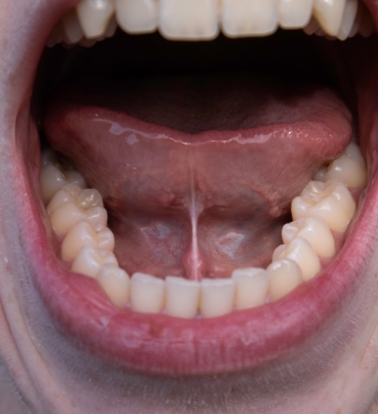
What is Restorative Dentistry?
Preventative dentistry involves keeping your teeth from acquiring decay and other problems that could endanger their long-term health. Exams, cleanings, applying sealants, checking for oral cancer — that’s all preventative. At its heart, general dentistry aims to be preventative dentistry.
But what happens when Dr. Jensen finds teeth that need restoring to full health? This becomes restorative dentistry. Restorative dentistry includes the diagnosis, treatment, and prevention of oral diseases. It involves a plan to restore teeth to full health, whether they have decay, is chipped or cracked, discolored, or even if teeth are missing.
It’s easy to confuse restorative dentistry and cosmetic dentistry, but the difference involves the basic health of the teeth. Restorative dentistry addresses teeth that have problems with their basic health. Cosmetic dentistry only deals with the aesthetics of the smile, and it addresses teeth that are generally healthy. There is some overlap, such as the possible use of crowns or composite fillings, but that is the difference between cosmetic and restorative dentistry.
Who is a Good Candidate for Restorative Dentistry?

If your teeth have any issues that need repair, rather than simple maintenance, you’ll need restorative dentistry. Decay, chips, cracks, deep staining, missing teeth — these would all need restoration.
When you come to see us for your consultation on restoration work you may need, Dr. Jensen will examine your teeth, your bite, and your overall smile. They’ll check for signs of gum disease. The two of you will discuss the issues that need to be addressed. They may be simple, such as replacing a failing silver amalgam filling with composite resin; or complex, such as dental implant-supported partial dentures.
What Sorts of Dental Problems Would Require Restoration?
There isn’t a set criterion for a problem being categorized as “restorative” versus “general” dentistry. But when treatments move beyond the basics of normal twice-yearly exams and cleanings, you could say they’re moving into restorative dentistry. Here are some examples that we would consider restorative:
- A broken tooth — A broken tooth can be restored by placing a crown over the entire remaining visible portion of the tooth. This returns strength and function without requiring the tooth to be extracted.
- Missing teeth — If you have one or two missing teeth, we can place implants. If you have a series of missing teeth, we may use an implant-anchored partial denture.
- Chipped teeth — If you’ve chipped a tooth, we can replace the missing corner with composite resin in dental bonding.
- Large fillings — Large areas of decay in a tooth, or a tooth that had a filling and then later develops additional decay, can be too large for a composite resin filling. In these cases, depending on where the area is in the tooth, we will apply an inlay or onlay to restore the tooth.
- Decay inside a tooth — If decay has entered the inner tooth, the patient will likely experience some extreme pain and the tooth is not in danger of needing extraction. We can perform a root canal to save the tooth, and then place a crown over the repaired tooth.
What Types of Dental Restorations Are Used?
Remember, the goal of restorative dentistry practices is to bring the teeth back to full health. A variety of procedures can be used:
Composite Fillings
Also known as “tooth-colored” fillings, these fillings are made from composite resin, which is a mix of plastic and glass. We no longer use silver amalgam at Broadway Family Dentistry. We place composite fillings, which also have the benefit of being virtually invisible once in place in a tooth, to fill areas of decay removed from teeth and to replace old, worn-out silver amalgam fillings.
Porcelain Crowns
Porcelain crowns are used to save teeth that are in danger of needing extraction either due to heavy decay, a former filling that has broken, large cracks, or the tooth having had a root canal. Crowns can also be used to change the shape of a misshapen tooth. A crown is a prosthetic that is made at a dental lab to our specifications. The crowns we use are made from dental porcelain for strength, resistance to staining, and because of their close resemblance to the look of natural tooth enamel. A crown is made to fit over the entire tooth, right down to the gumline. This returns strength, function, and beauty to the tooth.
Full dentures replace all the teeth on either the upper or lower arch, or both. The patient may be missing all of his or her teeth, or the teeth may be badly decayed enough to require extraction. Partial dentures involve a series of teeth, but not the entire arch. If possible, we prefer to use dental implants to act as anchor points for dentures, providing the stability that eludes typical dentures. Partial dentures may be removable appliances that are connected by wires on the back of the teeth to the adjacent remaining teeth.
Porcelain Fixed Bridges
Porcelain fixed bridges are used to replace one or more missing teeth. The bridge is anchored by crowns placed on the healthy teeth on each side of the gap, called the abutment teeth. Then an artificial tooth or teeth (called pontics) are used to replace the missing teeth. These bridges are permanently fixed in place.
The preferred option to replace a missing tooth or a couple of teeth is dental implants. Dental implants consist of a titanium “implant,” which is shaped like a screw. This implant is screwed down into the socket left from the former natural tooth root. Once in place, the jawbone grows around the titanium implant, making it a part of the jaw. A post is attached to the implant and an artificial tooth is attached to the post. Dental implants look, function, and feel just like natural teeth. Plus, they are the longest-lasting dental prosthetic, often lasting the remainder of the patient’s life.
Inlays and Onlays
Sometimes called a “partial crown,” these restorations involve a larger portion of the tooth. Inlays replace decayed tooth matter within the cusps on the top of the tooth. Onlays repair larger decayed areas, including the biting surface and one or more of the cusps. Like crowns, inlays and Onlays are fabricated at a dental lab and are usually made from dental porcelain.
If a tooth has an infection/decay that has reached the inner pulp of the tooth, we will need to perform a root canal on the tooth. A root canal cleans out and disinfects the entire inner portion of the tooth, removing all of the pulp, blood vessels, and nerve tissue. The empty tooth is thoroughly disinfected and then is filled with a rubber-like substance called gutta-percha. A composite filling is used to close the access hole. In most cases, a crown is placed over the tooth to protect it and maintain its strength. A root canal saves a tooth that would otherwise need to be extracted. Unlike many dental practices that don’t perform their own root canals, at Broadway Family Dentistry we handle these procedures in-house, saving you the hassle of finding an oral surgeon.
How Long Will My Results Last After Restorative Procedures?
At Broadway Family Dentistry, our aim with every procedure is for long-term endurance. Dental implants are the longest-lasting dental repair; they will usually last the remainder of the patient’s life. Bridges last from 10-15 years before needing a new one. Teeth with root canals can stay in place for the rest of the patient’s life if there is appropriate care. Inlays and Onlays are considered permanent repairs. Dentures need to be refitted once every two years. This is due to changes in the patient’s gum tissue. Overall, dentures last from 7-10 years. Composite resin fillings last from 7-10 years, although they can last longer.
At Broadway Family Dentistry, our aim with every procedure is for long-term endurance. Dental implants are the longest-lasting dental repair; they will usually last the remainder of the patient’s life. Bridges last from 10-15 years before needing a new one. Teeth with root canals can stay in place for the rest of the patient’s life if there is appropriate care. Inlays and Onlays are considered permanent repairs. Dentures need to be refitted once every two years. This is due to changes in the patient’s gum tissue. Overall, dentures last from 7-10 years. Composite resin fillings last from 7-10 years, although they can last longer.
What People Say About Us!
"I recently had a root canal done with Dr. Jensen and her team! This was my first root canal and I was very nervous about it. When a person hears those two words; my mind automatically thinks of pain and suffering! My experience was the exact opposite! Dr. Jensen thoroughly explained the procedure and answered all my questions and concerns. I was relaxed and comfortable the entire procedure. I went from having an unbearable toothache to zero pain whatsoever. I would highly recommend Dr. Jensen to anyone who may need a root canal in the future!"
Contact Us Today
Broadway Family Dentistry offers restorative dentistry procedures such as dental fillings and dental crowns to help restore teeth for patients. To learn more or to schedule a consultation, please call us at 701-839-1299. Our practice serves Minot, Williston, Garrison, New Town, Rugby, Bismark and Devils Lake, ND.







